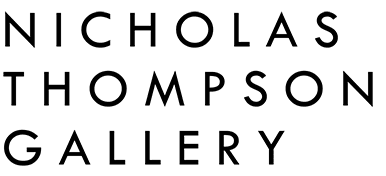VIRGINIA CUPPAIDGE SURVEY ‘THE NATURE OF ABSTRACTION’ REVIEWED BY JILL STOWELL IN THE NEWCASTLE HERALD
Art review: Virginia Cuppaidge, the nature of abstraction, Newcastle Art Gallery
Jill Stowell
It may at first seem surprising to find in Newcastle a survey exhibition covering the entirety of her long and successful career, but for Virginia Cuppaidge, the nature of abstraction has largely come about since the artist’s return to live in Australia, specifically in Newcastle.
The exhibition, which fills the lower floor of Newcastle Art Gallery, consists of 19 paintings, borrowed from many of the country’s major collections. It covers a distinguished career from 1972 to 2012. All the works were painted in New York; three of them are in the Newcastle collection.
Another monumental painting was donated to the collection of the University of Newcastle. Already familiar to many people, since it regularly hangs in the foyer of the Conservatorium concert hall, at six metres in length it must have been an exercise in logistics to bring it down Laman Street to the art gallery. While this is the largest work on view, many of the other paintings are over three metres long. Clearly, here is an artist unafraid of scale or undaunted by the challenges of working so big.
Size was one of the reasons why from a young age Virginia Cuppaidge was determined to live in New York, to experience first-hand one of the defining art movements of the 20th century. By the 1960s this spectacular city had established itself as the art centre of the world, with several generations of artists embracing Abstraction on immense canvases.
Many young Australian painters made the pilgrimage to view iconic works by artists such as Jackson Pollock, Robert Rauschenberg and Ellsworth Kelly, painters very different in approach but sharing a belief in the power of the non-representational and a confidence in working big. Many had an accompanying belief in a smooth, impersonal surface with no visible brush marks.
By 1973 Virginia Cuppaidge’s first solo show demonstrated so successfully her understanding of the New York ethos that its high priest, the critic Clement Greenberg, commented on the sophisticated maturity of this youthful artist. She was just 30 at the time. The works of the present overview, dating from the early ’70s, are rectangular and gently geometric, with bands of chalky colour setting up subtle interactions.
More minimal works followed, where layers of pale nacreous paint invoke the light in the sky, with the void anchored by linear hard edge arabesques. The Conservatorium painting is a spectacular example of this skilful, evocative minimalism.
In the 1980s and ’90s there is a violent change of direction, with brilliantly coloured compositions layering abstract patterning, ebbing and flowing with suggestions of biomorphic forms. An immense painting in pinks and blues flaunts its expressive vigour in spinning and radiating rhythms.
Bee map, the final work in the show from 2012, reverts to an expressive geometry with relaxed open circular shapes. Its sunny colour recalls the Australian landscape, an undercurrent, as the artist says, flowing through much of her New York creative output.
There is always the question with non-representational art of how strongly the underpinnings of an artist’s subconscious imagination contribute to the work. Virginia Cuppaidge asserts that an Australian element is always present in the breadth and air-filled dimension of her paintings. Critics in New York chose to comment on this. Do we perceive the same thing here? Or do we rather apprehend the endless stimulation of New York and its galleries?
How fortunate for Newcastle to have a painter of this stature living and working here. It will be fascinating to see what effect her return will have on her paintings once she sets up a Newcastle studio. Will it introduce a new generation of local artists to the power and possibility of Abstraction? Will the cohort of women artists gather renewed strength? It is already generating excitement.
What a coup this is for Newcastle Arg Gallery. It is a show of strength that any gallery in the country would have been happy to display.
